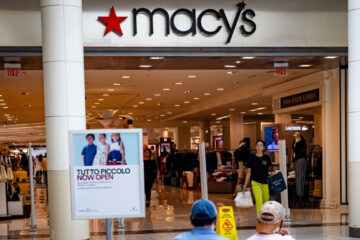Google — now Alphabet — scored one of the best acquisitions in Silicon Valley history with its purchase of YouTube for $1.65 billion back in 2006.
Successful Silicon Valley companies tend to follow a certain pattern.
Get big. Go shopping.
Not long the original idea that made companies like Amazon, (AMZN) – Get Amazon.com Inc. Report, Facebook (META) – Get Meta Platforms Inc. Report and Uber (UBER) – Get Uber Technologies Inc. Report household names, the companies pivoted into industries outside of their original spheres of interest..
Facebook purchased Instagram to expand its social media empire. It bought WhatsApp to capitalize on that messaging apps popularity. And it bought virtual reality videogame company Oculus because it had extra money to spend.
While the Oculus purchase failed to move the needle at the time, the company now represents the lynchpin for Facebook’s leap into the future through the Metaverse, even leading the company to change its name to Meta Platforms.
As if Amazon’s pivot from an online bookstore to the largest e-commerce company ever wasn’t enough, the company has pivoted into everything from web-hosting and data storage, to cloud computing and artificial intelligence, among other endeavors. All of those businesses helped Amazon generate nearly half a trillion dollars in revenue last year.
Uber was able to expand its ride-sharing business model and pivot into food delivery, a move that has paid off well for the company as the pandemic forced many people to rely on delivery services to get their meals.
But Google’s parent company Alphabet (GOOGL) – Get Alphabet Inc. Report may have made the best Silicon Valley pivot when it purchased YouTube back in 2006.
YouTube’s Impact
YouTube was already extremely popular by the time Google caught on.
The video-sharing service was founded in February 2005 and it didn’t take long for Google to understand that content is king on the internet.
By the time Google purchased YouTube in November 2006 for $1.65 billion, the platform was generating over 100 million video views per day (now that number is nearly 5 billion).
When Google finally separated the unit’s advertising revenue for the first time in 2019, the results were astounding. To say that bet paid off for the company would be an understatement.
YouTube brought in $15 billion in revenue in 2019, more than 9 times what Google paid for the company more than a decade prior.
“Despite the pullback from some advertisers we really believe YouTube remains well positioned to benefit from the shift to digital video, maybe first on brand,” Alphabet Chief Business Officer Philipp Schindler said.
YouTube brought in $7.34 billion in advertising revenue in just the second quarter. That total was only a 4% year-over-year increase that missed analyst estimates of $7.5 billion.
So how does Alphabet plan to squeeze more money out of YouTube platform?
“There’s also a lot of potential for shopping on YouTube. Just last week we announced a partnership with Shopify. It will help creators easily connect their stores to YouTube and enable shopping across their livestreams and videos. There’s more to come here,” CEO Sundar Pichai said in the company’s earnings call.
YouTube Takes on TikTok
TikTok is the new disrupter on the social media block and the newbie has been making waves.
The social media platform, owned by Chinese conglomerate ByteDance, is expected to have 750 million monthly users worldwide in 2022, according to an Insider forecast, as the company has revolutionized the short-form video content market.
Tech is a competitive space, so rivals at Meta and Alphabet have taken notice and are preparing for their own short-form content to be prioritized.
“Consumers are increasingly consuming short-form videos, obviously. We’re seeing this across multiple platforms, including YouTube. As Sundar noted earlier, the Shorts are being watched by 1.5 billion plus logged-in users every month,” Schindler said.
While Schindler shied away from describing YouTube’s plan to monetize its short-form video, he stated that the company is “encouraged by the results we’re seeing.”


